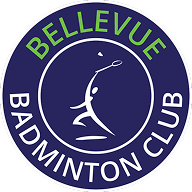WHAT COACHES LOOK FOR IN TERMS OF EFFORT
November 2, 2021 – Derrick Ng
Effort is one of the characteristics I look for when I am coaching my students. The grit and determination students showcase in their training will greatly affect their playing ability in the long run. It is a good building block that I can use to push their ability to overcome failures and to start seeing better results. As a former athlete, I dedicated myself to ‘The Grind’; to perform repetitive tasks over and over in order to attain a goal.
Here is what I look for in terms of ‘effort’ when I am coaching:
- When the student is doing a one-shuttle drill to hit a certain amount of rallies, if there is a mistake early in the rally, does the student try again with that shuttle or hit it off the court to continue with the next rally? Usually students that put in a lot of effort would want to rally more and do the drill as much as possible instead of skipping a shuttle to finish the drill quicker.
- When the student is feeding from one corner, does the student just stand in the corner or do they move and do the footwork to the corner they need to hit from? When you are feeding, try to stand near the middle and move to the corner you are feeding from so you can practice your footwork that leads up to the shot. Simulate game play as much as possible!
- When the student is feeding during a one shuttle drill with other people on their side, does the student split-step even if the shuttle isn’t going to them? You need to split-step every time after your opponent hits the shot. Not only will it make you more ready when the shuttle comes to you, you get more practice working on your split-step timing which is crucial!
- Does the student do recovery footwork back to the base position after the last shot in a multi-shuttle drill? Footwork is not just to the corner, but from the base, to the corner, and back.
- Does the student try hard in the start of their sets or only on their last set? Don’t pace to complete all your sets with half effort. Put in 100% effort in each set, even if it means you may not have enough energy to complete the last few sets left in the drill. The harder you try each time, the quicker you will become fitter and stronger so eventually you’ll be able to complete all your sets with your best effort!
- Is the student just sitting around/not watching/being engaged when it is not their turn? It’s okay to be tired after your drill; it is expected. But lots can be done between your sets. Watching your partner to see what they are doing well, and seeing if you can do your next set better will not only help your own progress but also push your training partners to do the same. Doing this will create a better team atmosphere and build better training partners which will ultimately help you as well.
- Does the student stop the drill mid-drill for reasons that does not warrant the drill to be stopped? If a shuttle drops but is outside your range of footwork, don’t stop the drill to walk to the bird, scoop it up, and then hit back. If there is a shuttle in a hazardous location, your coach or teammate should see it and prompt you or your teammate to quickly hit the shuttle out of your way. NEVER STOP YOUR DRILL FOR NO GOOD REASON! You can’t expect to stop a rally mid way during a tournament and expect not to lose the point!
- Does the student walk and take a long time to get water when they’re in the middle of the drill to burn more time? People are waiting for you. Time is valuable. Don’t waste it.
- When the student is late for training, do they hustle in to get ready quickly? If you’re late and you walk in nonchalantly, that’s a good way to show your coach and others that you do not care.
- When the student makes a mistake, do they go to the shuttle to give to their training partner on the other side? This isn’t just about respect, but continuing the flow of the drill and not wasting time.
- Does the student move their feet and engage themselves when rallying during warm-up? Standing around during warm-up is inefficient. We train so we can learn to become more efficient so let’s pick up the energy and start being proactive when warming up. Guaranteed to warm you up faster than just standing there!
- Does the student hustle to and from the demo of the drill? After the demonstration of the drill is explained and it’s time to go back to your court to start the drill, either run, jog, or walk fast to your court. This is not the time to walk and chit-chat with your friends. Yes, training with your friends is fun and can be somewhat social, but the priority is to train, practice, and improve one’s self.
- Does the student stack quickly? The quicker you stack, the faster you can start the drill, the more time you will get to train. If you’re in a group and there’s one person resting, start the drill once everybody stacks one or two rows each, and the person resting can continue stacking.
Alright, enough talking! Let’s get back out there and get it done!
Derrick Ng
Head Coach – Bellevue Badminton Club



Recent Comments